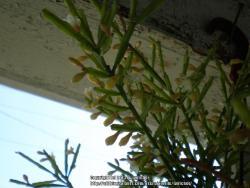
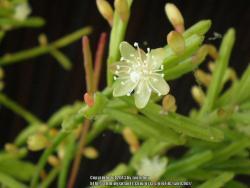
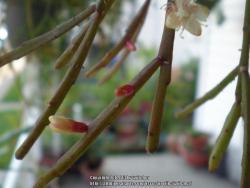
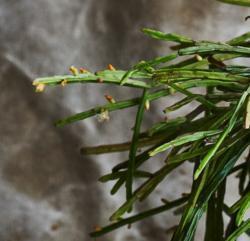
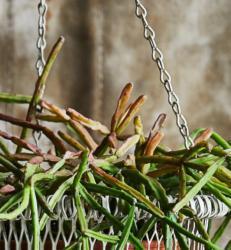
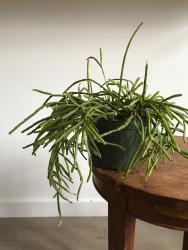
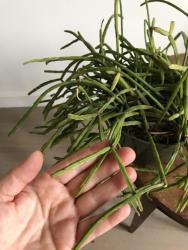
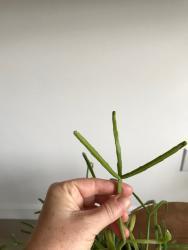

twitcher said:JoJoe, The first plant is definitely R. sulcata. When it flowers and produces fruit, the fruit will be white, which is the easiest way to tell it from R. ewaldiana. The difference between these two species is subtle, but easy to see in most cases once you have seen the plants side by side and looked at the formal descriptions of the plants. I have both, and was never sure until they both fruited last year.
The second plant is not R. ewaldiana (nor sulcata). I have a couple of those plants(as yours shown in the picture), acquired over the past decade, that I have been trying to get a good ID for. However, I do not want to publicly attach a name to it here, as the ID is not certain. There are a number of varieties that it could be. Ewaldiana stem segments are not tubular. They have the same shape as sulcata stem segments. It is the way that stem segments connect that distinguishes the two species. Sulcata will have a long stem segment with multiple shorter segments coming out of the long segment. The shorter segments will be limited in length, typically a couple of inches for me. (If you can locate a picture of R. mesembryanthemoides, it does the same thing, except that the short stem segments are only about an 1" or so and there are a lot more of them with mesemberyanthemoides- sulcata is much looser and does not do look at all similar, its just the way the short segments grow on the longer segments) R. ewaldiana, however, is lankier than sulcata. Stems branch more freely, tend to run longer lengths and most importantly, do not normally duplicate the "multiple short segments attached to a single long segment" as a normal growth pattern. Lastly, Ken from Rhipsalis.com states that R. ewaldiana is not normally available commercially. It is apparently only held by a few collectors in the US. I was fortunate enough to get a cutting from him a couple of years ago and will gladly share one with you when my plant is big enough (will evaluate in warmer weather). This is a nice one to have and produces beautiful pink berries.
I think I know the company that your plants came from. They have been sticking R. ewaldiana labels on a lot of different plants recently but I have not seen any of them be the true R. ewaldiana. However, I have seen a couple recently in the stores that could have been easily confused with ewaldiana, but upon closer inspection were sulcata.
To conclude, I am confident that your first plant is R. sulcata and confident that the second one is neither sulcata nor ewaldiana.
Hope this helps.
-twit
twitcher said:JoJoe, A couple of pics to help you.
R. sulcata showing lots of flower buds. Notice the long stem running thru the pic vertically, with shorter segments emerging from the long stem. This is a characteristic of R. sulcata, but number of short segments can vary a lot.
R.sulcata flower
R. ewaldiana Notice how the stems branch, which is different from sulcata in habit.
Ewaldiana flower buds and flowers are, for me, pinker than R. sulcata. This color difference also follows in the fruit, with ewaldiana berries being pink and sulcata berries being white. However, fruit color is not always a good way to tell Rhipsalis apart as there are a number of species with varieties of different flower and fruit color. However, I have not heard of this for either ewaldiana or sulcata.
So, the big question becomes what is the ID of your second plant?